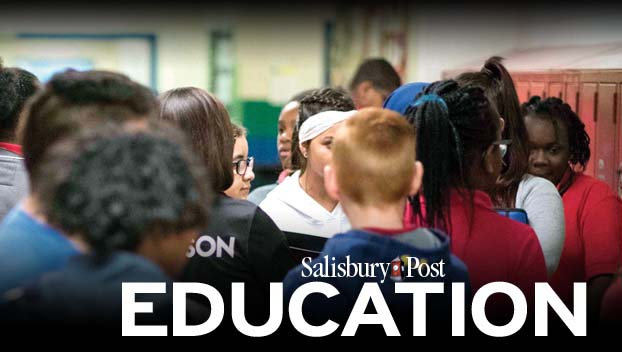Extent of COVID-19 learning loss remains open question for educators
Published 12:10 am Sunday, May 30, 2021
SALISBURY — Students have lost some progress in the past year, but who was most affected and to what extent will become clearer in the coming year.
Before the COVID-19 pandemic, learning loss was typically used to describe the decline in growth seen in students during summer break, but the term was applied to the context of students being out of classrooms during the pandemic.
Rowan-Salisbury Schools administration began championing in-person instruction as the best educational setting it could offer and the desire to return students to classrooms as soon as possible shortly after Gov. Roy Cooper ordered public schools to close last March.
More than a year later, every public school district in the state is looking back on a full year and half a semester of unprecedented scheduling and virtual learning. The extent of the impact is difficult to quantify. Students were in school less, schedules changed throughout the past year and districts had to adapt to emergency remote learning almost overnight in March 2020.
When Assistant Superintendent of Curriculum and Instruction Jason Gardner gave the Rowan-Salisbury Schools Board of Education a detailed breakdown of learning loss in elementary students in February, the numbers were down significantly for kindergarten reading proficiency, with a 17% drop compared to the beginning of the year. Second-grade reading proficiency, however, was up 14% overall and other grades were close to normal.
Grades 3-5 saw Lexile growth. Grades 1-5 math assessments were neutral to somewhat positive, but only 11 of the district’s 20 schools opted to administer those tests school-wide.
Gardner told the Post on the whole the district’s math data shows more loss than its literacy data.
“I think that’s probably what you would expect,” Gardner said, adding reading does not require as much direct instruction to improve, but if you do not know how to add fractions that requires direct instruction.
Renaissance, a major education company that creates assessments, analyzed winter test data from 3.8 million students and published a report in April that showed students were showing growth, but lagging a bit behind a normal year.
The federal government also waived all standardized testing last year and districts were not held to participation rate rules this year, but the state required schools to administer the tests in person this year. So, virtual students had to come to facilities in person to test. These tests are also lagging data, meaning they come after the school year has ended and students are on their way to the next grade. The district assesses students throughout the year as well.
RSS Chief Technology Officer David Blattner said the district has until July 5 to administer makeup tests, but the percentage of students as of Friday who took standardized tests were well below the normally required 95%. Only about 84% of high schoolers, 86% of middle schoolers and 90% of elementary school students had taken the tests.
“The state tests we just took, those will be a mark,” Blattner said. “The state tests were designed not necessarily to evaluate a student, but to evaluate a program.”
Gardner said the year-end standardized testing data will be difficult to use because this year is an anomaly. The state will also not be releasing eighth-grade reading scores this year. He does expect standardized scores to be down and the district will be examining its numbers when compared to nearby districts.
“The bar for being at grade level probably really needs to be recalibrated across the whole country, because it’s really hard to measure an atypical year against a typical year,” Gardner said.
Looking ahead
Gardner said the approach that seems to work best for remediation is working it into the next year’s curriculum.
“It won’t be a perfect science, but I think that we already do that to some scale,” Gardner said. “It would be be naïve of us to think that every kid was coming to the next grade fully grade-level ready to begin with. I think we had some of those types of techniques going on already, we just have to scale it up.”
The impact may depend on economics as well. Gardner said the district is trying to understand if remote learning was more challenging for students from poor families.
Gardner said the pandemic was damaging to some kids, but it may have been a better environment for others.
“I think it’s very conditional depending on the kid,” Gardner said. “Depending on the support system they have at home, depending on their style of learning. I don’t think we’ve got a clear answer on it.”
He expects research over the next year to give educators a clearer picture of the pandemic’s impact.
The district will be able to assess whether students participating in its expanded summer school. Gardner said it will assess students at the beginning and end of the summer sessions, so it will be able to measure their growth during that time. The district identified at-risk elementary students to participate in the elementary programming, though it was opened to all middle and high school students.
“You’ll see growth in that,” Blattner said, adding summer school will also be a chance to see how students are responding to being in class five days per week.
Blattner said the district has to take data from standardized tests, the daily information teachers get during summer school and take those lessons into next school year to make gains quickly.






